Ibanez AEG50
$178.99
Perfect for any musician looking for a versatile, lightweight electro-acoustic guitar, the Ibanez AEG50 offers a great sound, comfortable playability, and an array of features to take your music to the next level.
Compare
Description
The Ibanez AEG50 is one of the latest offerings from the legendary Japanese guitar manufacturer, Ibanez. It is a sleek and stylish acoustic-electric guitar that is the perfect choice for musicians who want a versatile instrument that can handle a wide range of playing styles and musical genres.
At the heart of the AEG50, you will find a solid spruce top and a mahogany back and sides. This tonewood combination is a classic recipe for great acoustic guitar tone, providing warmth, depth, and resonance.
The AEG50 has a slim, comfortable neck made of mahogany, with a rosewood fingerboard that offers a smooth playing experience. The guitar has a scale length of 25 inches and 20 frets, making it easy to play and fast-fingered.
The AEG50 also features Ibanez’s AEQ-TTS preamp with a built-in tuner. This preamp system uses a single button to turn on the tuner and comes with a 9V battery power source. The controls of the preamp include an onboard notch filter and EQ slider for ultimate tone shaping.
In terms of design, the Ibanez AEG50 features a slim and contoured body with a glossy black finish, which adds a touch of class and elegance to the instrument. As with all Ibanez guitars, the attention to detail and craftsmanship is evident, making it stand out among other acoustic-electric guitars.
The AEG50 is versatile and can easily be played in any musical style such as blues, rock, folk, and more. The guitar can also be used for fingerpicking and strumming. Thanks to its well-balanced tone and solid construction, the AEG50 is capable of delivering excellent sound quality, whether played acoustically or plugged in.
In conclusion, if you’re looking for an acoustic-electric guitar that is both stylish and versatile, the Ibanez AEG50 is definitely worth considering. With its solid construction, excellent tone, and onboard preamp, it is a fantastic option for guitarists of all skill levels.
Ibanez AEG50 properties
| Product name |
AEG50 |
| Brand |
Ibanez |
| Type |
String Instruments |
| String Instruments |
Acoustic Guitar |
| Number of Strings |
6 pcs |
| String Type |
Steel |
| Built-in Microphone |
Yes |
| Handedness |
Right-handed |
| Number of Frets |
20 |
| Cutaway |
Single Cutaway |
| Size |
4/4 |
| Wood Type (front) |
Spruce |
| Wood Type (back) |
Sapele |
| Wood Type (body sides) |
Sapele |
| Wood Type (fretboard) |
Walnut |
| Built-in Tuner |
Yes |
| Colour |
Black, Blue, Fireburst/Colourburst |
Frequently Asked Questions:
Question: How can I change the strings on my Ibanez AEG50 acoustic guitar?
Changing strings on your Ibanez AEG50 acoustic guitar is a simple task that you can do at home. Here's how to do it:
1. Gather your supplies: You will need new strings, string cutters or scissors, and possibly a tuner if you want to check the pitch of the new strings after installation.
2. Unplug any electronic devices connected to your guitar, such as a pickup or preamp system.
3. Remove the old strings: Use the string cutters or scissors to cut each string at its bridge pin, which is located near the sound hole of the guitar. Carefully lift each string off the saddle and remove it from the guitar. You may need to use a guitar capo or clamp to hold down the remaining strings while you remove them one by one.
4. Install the new strings: Take one end of the new string, thread it through the hole on the bridge pin, and pull it up towards the tuning pegs. Wrap the string around the first tuning peg clockwise (for right-handed players) or counterclockwise (for left-handed players). Make sure to leave enough slack for adjustments later on.
5. Continue this process for each string, working your way from the low E string to the high E string. Some acoustic guitars have an additional string called a "G string" or "low G string." If your Ibanez AEG50 has one, follow the same procedure.
6. Once all the strings are installed, tune your guitar using a tuner or by ear. The standard tuning for acoustic guitars is E-A-D-G-B-E (from low to high).
7. Adjust the string height: After you've tuned your guitar, you may want to adjust the string height at the saddle using a hex wrench or Allen key provided with your Ibanez AEG50 or purchased separately. This will help improve the intonation and playability of your guitar.
8. Enjoy your freshly strung Ibanez AEG50 acoustic guitar!
What are the common issues encountered while setting up and maintaining Ibanez AEG50 acoustic-electric guitar?
Here are some of the common issues encountered while setting up and maintaining an Ibanez AEG50 acoustic-electric guitar:
1. Intonation issues: The intonation may be off, causing the guitar to sound out of tune when playing higher frets. You can fix this by adjusting the saddle height on the bridge. Action problems: High action can make it difficult to play chords and notes easily. Adjusting the saddle height and truss rod can help lower the action. Electronics issues: The pickup may produce unwanted noise or feedback, or the volume/tone controls might not work correctly. Check the connections and make sure everything is securely plugged in. You may need to replace the battery if it's dead. Fret buzz: If you hear a buzzing sound while playing, it could be due to fret buzz. This can be caused by improper fret leveling or worn-out frets. A professional setup might be needed to fix this issue. Loose tuners: Over time, the guitar tuners may become loose and start to wobble, causing the guitar to go out of tune easily. Tightening the screws on the tuner posts can help prevent this from happening. Cracking or splitting: The guitar top can crack or split if it's exposed to extreme temperature changes or humidity. To prevent this, keep your guitar in a controlled environment with consistent temperature and humidity levels. Dirty pickup: A dirty pickup can cause unwanted noise. Clean the pickup using a soft cloth and isopropyl alcohol. Broken strings: Strings can break due to wear and tear or poor quality. Replace broken strings with high-quality ones.
What unique features set the Ibanez AEG50 apart from other acoustic guitars in its price range, and how do these attributes contribute to its overall sound quality?
The Ibanez AEG50 is a mid-priced acoustic guitar that stands out among its competitors due to several unique features. Firstly, it boasts a solid mahogany top, which provides a warm and rich tone that resonates well throughout the frequency spectrum. This contrasts with many lower-priced guitars that use laminate materials for their tops, which can result in a less pronounced sound. Secondly, the AEG50 has an innovative body shape known as the "Advanced X" bracing pattern. This design provides additional strength and stability to the guitar's top, allowing it to project more volume and sustain than traditional bracing methods. The advanced x bracing also allows for a thinner top, which results in a lighter overall weight of the guitar, making it more comfortable to play for longer periods. Another notable feature of the AEG50 is its onboard electronics system, which includes an undersaddle pickup and preamp with volume, tone, and phase controls. This feature allows for amplified performances without requiring additional equipment, making it a convenient choice for smaller venues or intimate gigs. Overall, these unique features contribute significantly to the AEG50's exceptional sound quality. The solid mahogany top provides a rich and warm tone, while the advanced x bracing pattern ensures that this tone is projected with clarity and volume. The thin body and lightweight construction make it easy to play for extended periods, which is essential for live performances or recording sessions. Finally, the onboard electronics system adds an extra layer of versatility and convenience, making it a top choice in its price range.
What specific adjustments or tweaks can be made to the neck and bridge of the Ibanez AEG50 acoustic guitar to optimize its tone and playability?
The Ibanez AEG50 is a great instrument, but like any other acoustic guitar, it's not perfect out-of-the-box. Here are some specific adjustments or tweaks you can make to the neck and bridge to optimize its tone and playability:
**Neck Adjustments:**
1. Action (string height):** Lowering the action on the high frets can improve playability, but be careful not to lower it too much, as this can cause buzzing or rattling. Fretboard radius:** If you prefer a flatter or more curved fretboard, consider sanding or replacing the existing fretboard with one that suits your playing style. Neck profile:** Ibanez necks are typically thin and fast, but if you find it too narrow or too wide, consider adding shims to adjust the neck width or re-profiling the neck to suit your preferences. Bridge Adjustments:**
1. Saddle height:** Lowering the saddle height can improve sustain and tone, as a lower saddle allows for more vibration transfer from the string to the body. Intonation adjustment:** Make sure the bridge is properly adjusted to ensure accurate intonation across the fretboard. Check that the 12th fret harmonic matches the open string pitch. Bridge pin height:** If you're using a bone or plastic saddle, consider raising or lowering it to optimize the tone and playability. Tone-Enhancing Adjustments:**
1. Bone nut vs. Consider replacing the standard plastic nut with a bone nut for improved sustain and clarity. Saddle material:** Switching from a standard metal or plastic saddle to a bone, graphite, or titanium saddle can improve tone and playability. String gauge and type:** Experiment with different string gauges (e. Additional Tips:**
1. Set up by a professional:** If you're not comfortable making these adjustments yourself, consider taking your AEG50 to a professional luthier or guitar technician. Monitor your progress:** As you make adjustments, listen carefully to the changes in tone and playability. Make incremental changes and test them before committing to more significant modifications. Keep it simple:** Don't overdo it! Some adjustments can have unintended consequences, so prioritize simplicity and subtlety when making changes. Remember, every guitar is unique, and what works for one player may not work for another. Be patient, experiment carefully, and trust your ears to guide you in optimizing the tone and playability of your Ibanez AEG50.
Before you buy Ibanez AEG50


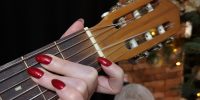

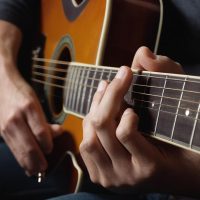

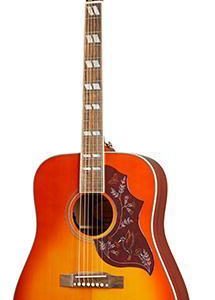
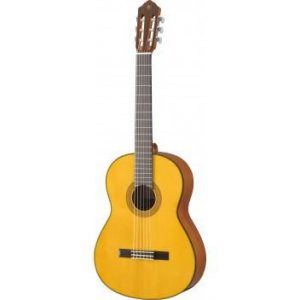
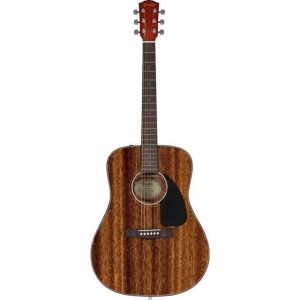
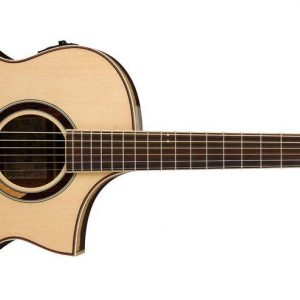
Kyler –
As a dedicated acoustic guitarist, I recently added the Ibanez AEG50 to my collection, and it’s been a game-changer for my musical journey. With its Spruce Wood Type-front, this beauty delivers richness and depth to each note, making it perfect for both amateur and professional use. Compared to other popular acoustic guitars, I find that the AEG50 has a more full-bodied sound better suited for larger venues or studio recordings. If you’re in the market for a new guitar, I highly recommend checking it out!
In other news, while exploring Edmonton during my recent stay at the Hyatt Place Downtown, I discovered its vibrant arts scene and caught some live music performances at local venues. If you’re visiting Edmonton, I would definitely recommend staying here!
Unfortunately, it’s disheartening to hear about the incomplete orphanage that was donated seven years ago by Ishrat Baig. While her initiative was commendable, it’s unfortunate that the project has not been completed despite her best efforts. We hope steps will be taken to address this issue and ensure vulnerable children have access to safe and sustainable living arrangements.
Stay safe during these challenging times, and as always, prioritize your health and safety above all else! Stay curious, stay informed, and keep exploring new possibilities.
Kylie –
I must respectfully disagree with Kyler’s glowing review of the Ibanez AEG50. While it’s true that this acoustic guitar has a rich and full-bodied sound, I believe its limitations make it more suited for intimate settings rather than larger venues or studio recordings.
Firstly, the Spruce Wood Type-front may deliver depth to each note, but it also tends to accentuate any minor imperfections in playing technique. In contrast, guitars with more versatile tonewoods can help mask these flaws and produce a smoother overall sound.
Secondly, I find that the AEG50’s body shape is not as conducive to fingerstyle or flatpicking techniques as some other acoustic guitars on the market. The guitar’s narrow waist and relatively short scale length make it feel less comfortable to play for extended periods of time.
Lastly, while Kyler mentions that this guitar is perfect for both amateur and professional use, I think its limited dynamic range makes it more suited for beginners or hobbyists who are still finding their tone and technique. More experienced players may find themselves wanting a bit more complexity and nuance from their instrument.
All in all, while the Ibanez AEG50 has its strengths, I believe it’s overrated as a versatile acoustic guitar for larger venues or studio recordings. However, if you’re looking for a beginner-friendly instrument with a warm, rich sound, then this might be worth considering.
On a completely unrelated note, have you seen the video of Finn the Dachshund’s meltdown over being ‘maxed out’ on treats? I mean, I’ve had my fair share of tantrums as a child, but this pup takes the cake (or should I say, the treat)! It’s hilarious to watch and serves as a reminder that even our furry friends can get overwhelmed by life’s little stresses.